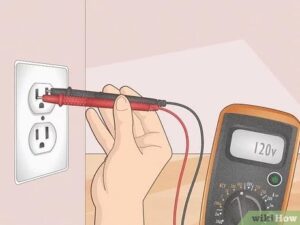Looking to install a battery disconnect switch on your semi? Look no further! In this article, we’ll walk you through the simple steps to successfully install a battery disconnect switch on your semi-truck. Whether you’re a seasoned trucker or just starting out, having a battery disconnect switch can be a valuable addition to your vehicle. It allows you to easily cut off power to your battery, preventing drain and increasing its lifespan. So, let’s dive in and learn how to install a battery disconnect switch on a semi!
How to Install a Battery Disconnect Switch on a Semi
Installing a battery disconnect switch on a semi truck is an important step to ensure the safety and functionality of the vehicle’s electrical system. Whether you’re a truck driver, a fleet manager, or a DIY enthusiast, this guide will provide you with a detailed step-by-step process to install a battery disconnect switch on a semi. By following these instructions, you’ll be able to effectively disconnect the battery when needed, preventing unnecessary drain and potential electrical hazards.
1. Gather the Necessary Tools and Materials
Before you begin the installation process, make sure to gather all the tools and materials required. Here’s a list of items you’ll need:
- Battery disconnect switch
- Wire cutter/stripper
- Wrenches
- Screwdriver
- Electrical tape
- Heat shrink tubing
- Terminal connectors
- Wire loom
2. Determine the Placement of the Battery Disconnect Switch
The first step in the installation process is to determine the optimal placement for the battery disconnect switch. It should be easily accessible from the driver’s seat and located near the battery. Find a suitable location that allows for easy operation and safe access.
3. Disconnect the Battery
Before proceeding with the installation, it’s crucial to disconnect the battery to avoid any accidents or electrical shocks. Start by turning off the ignition and removing the key. Then, locate the negative terminal on the battery and use a wrench to loosen the nut. Once the nut is loose, remove the negative cable from the battery.
4. Install the Battery Disconnect Switch
Now that you have determined the placement and disconnected the battery, it’s time to install the battery disconnect switch. Follow these steps:
- Choose an appropriate mounting location for the switch. Ensure it is easily reachable and secure.
- Drill holes in the mounting location for the switch, using the appropriate drill bit size.
- Place the switch in the mounting location and secure it using the provided hardware.
- Connect the positive side of the battery to one of the switch terminals using a terminal connector. Tighten it securely using a wrench.
- Using a new cable, connect the other terminal of the switch to the positive terminal of the battery. Again, use a terminal connector and tighten it securely.
5. Route and Secure the Wiring
After connecting the battery disconnect switch, it’s important to route and secure the wiring properly to ensure neatness and prevent any damage. Follow these steps:
- Measure the length of wire required to connect the switch terminals.
- Cut the wire to the appropriate length using a wire cutter.
- Strip a small portion of insulation from each end of the wire.
- Slide a heat shrink tubing onto each end of the wire, covering the exposed stripped area.
- Connect one end of the wire to the switch terminal and heat the tubing using a heat gun to seal it.
- Route the wire along the designated path, preferably using wire loom to protect it from any potential damage.
- Secure the wire using cable ties or clips at various intervals to prevent any movement or rubbing.
- Connect the other end of the wire to the positive terminal of the battery using a terminal connector. Heat the tubing to seal it.
6. Test the Battery Disconnect Switch
Once the installation is complete, it’s crucial to test the battery disconnect switch to ensure it functions correctly. Follow these steps:
- Reconnect the negative cable to the negative terminal of the battery and tighten the nut.
- Operate the battery disconnect switch according to the manufacturer’s instructions. Ensure it activates and deactivates smoothly.
- Verify that the electrical system is disconnected when the switch is in the “Off” position and connected when in the “On” position.
Installing a battery disconnect switch on a semi truck is a relatively straightforward process that can greatly enhance safety and prevent unnecessary battery drain. By following the step-by-step instructions in this guide, you can effectively install a battery disconnect switch on your semi and enjoy the peace of mind that comes with having better control over your vehicle’s electrical system.
Remember, it’s essential to regularly inspect the battery disconnect switch and wiring for any signs of damage or wear. If you notice any issues, it’s recommended to consult a professional mechanic for assistance. Stay proactive in maintaining your semi’s electrical system, and you’ll enjoy a safer and more reliable driving experience.
Frequently Asked Questions
What tools do I need to install a battery disconnect switch on a semi?
To install a battery disconnect switch on a semi, you will need the following tools:
- Socket wrench set
- Wire cutters/strippers
- Electrical tape
- Drill and drill bits
- Screwdriver
- Wire connectors
- Heat shrink tubing
Where should I mount the battery disconnect switch on my semi?
The location to mount the battery disconnect switch may vary depending on the specific model of your semi. However, it is generally recommended to mount it near the battery or in a readily accessible location for easy operation. Ensure that the switch is easily reachable and not obstructed by any other components.
How do I disconnect the battery before installing the switch?
To disconnect the battery before installing the switch, follow these steps:
- Turn off the vehicle and remove the key from the ignition.
- Locate the negative terminal of the battery and use a socket wrench to loosen the nut or bolt securing the negative cable.
- Once the cable is loose, carefully lift it off the battery terminal.
- Secure the loose cable end to a non-metallic part of the vehicle to prevent accidental contact with the battery terminal.
How do I connect the battery disconnect switch?
Follow these steps to connect the battery disconnect switch:
- Choose a suitable location for the switch and mark the mounting holes.
- Using a drill and the appropriate drill bit, create holes for mounting the switch.
- Position the switch over the holes and secure it in place using screws or bolts provided with the switch.
- Identify the positive cable of the battery and cut it at a convenient location.
- Strip the ends of the cut cable and the switch’s positive wire.
- Connect the two stripped ends using a wire connector and secure it tightly.
- Cover the wire connector with electrical tape for added insulation.
- Repeat the same process for the negative cable, connecting it to the switch’s negative wire.
Do I need to disconnect the battery before installing the switch?
It is generally recommended to disconnect the battery before installing the switch to ensure safety and prevent any accidental electrical shorts. However, if you take necessary precautions and are confident in your skills, you may be able to install the switch without disconnecting the battery. Exercise caution and follow proper safety procedures throughout the installation process.
Final Thoughts
Installing a battery disconnect switch on a semi is a crucial step to ensure safety and prevent battery drain. To begin with, gather the necessary tools and materials, including a battery disconnect switch, wire cutters, and a wrench. Start by disconnecting the negative battery cable and attaching the switch to the battery terminal. Connect the remaining cable ends to the appropriate terminals, ensuring a secure and tight connection. Finally, test the switch by turning it on and off to ensure it is functioning properly. By following these steps, you can easily install a battery disconnect switch on a semi and protect your battery from unnecessary drain.


